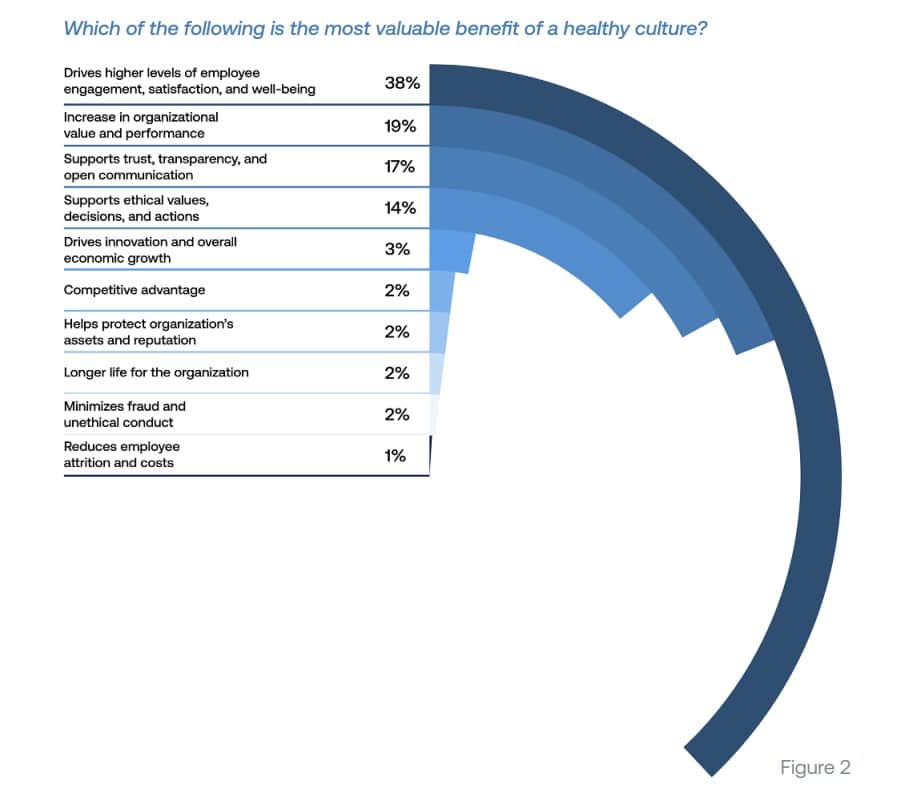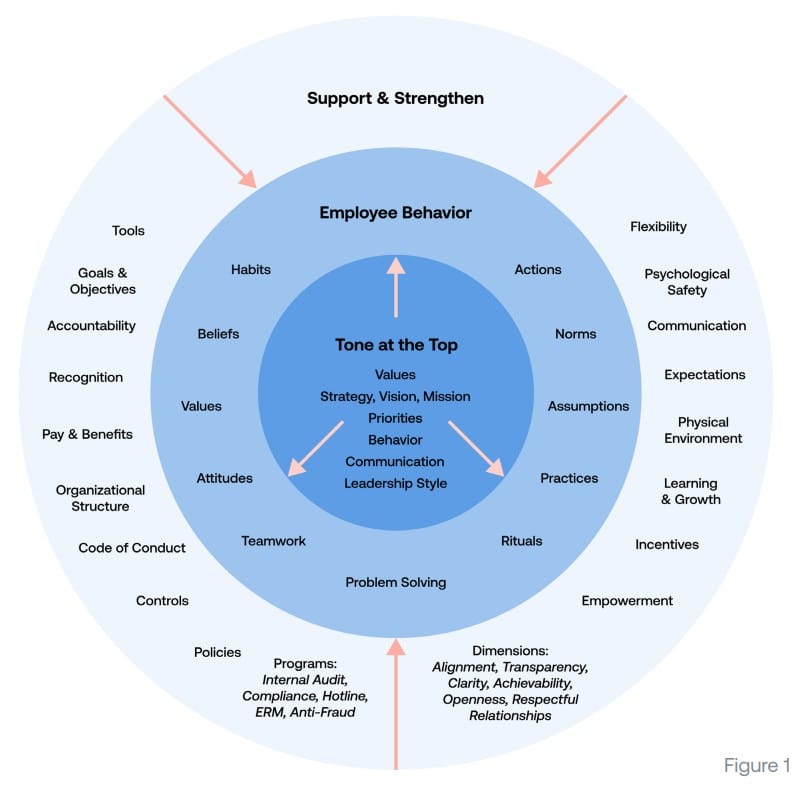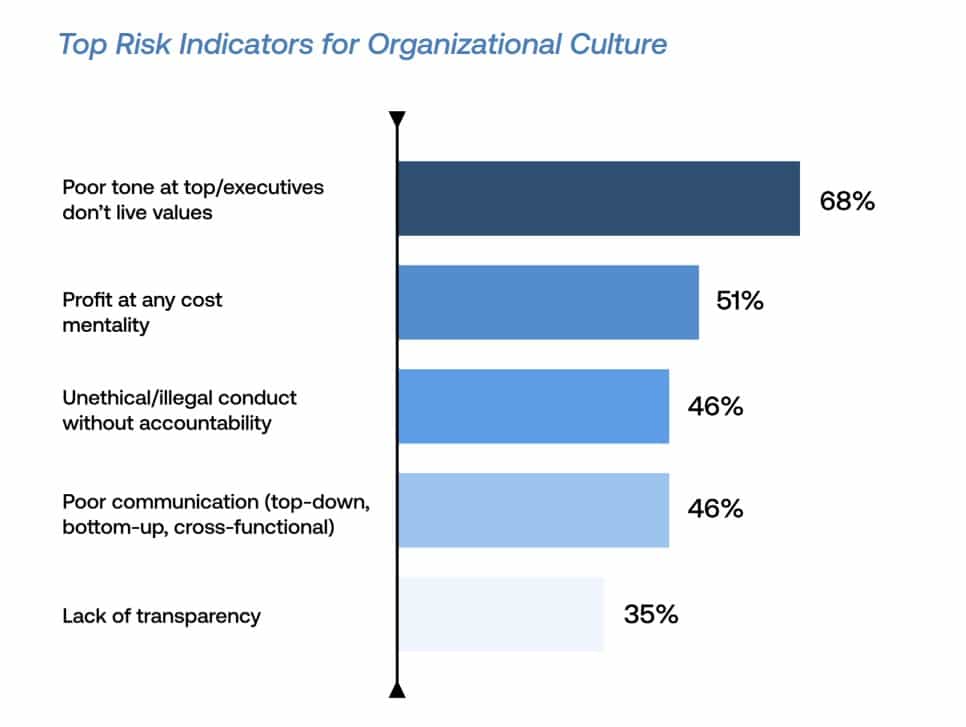With brand and business values a key component of the Purpose mandate consumers are demanding, nothing screams “devoid of values” like unethical behavior from a company’s top executives—but new research from audit, risk, and compliance management firm AuditBoard reveals that despite the major risk that this behavior is seen to pose, many companies are not conducting culture assessments to stay ahead of the many kinds of corporate malfeasance that can arise from internal misalignment on values and ethics.
The firm’s new 2023 Organizational Culture and Ethics report—co-authored by Richard Chambers, senior internal audit advisor at AuditBoard and former CEO and president of The Institute of Internal Auditors, and Cynthia Cooper, CEO of CooperGroup, former WorldCom chief audit executive and whistleblower, and a TIME Magazine Person of the Year—finds that even when companies do assess culture, they frequently rely on more qualitative approaches such as root-cause analyses in individual audits and behavioral observation instead of more structured, holistic, and formal quantitative approaches to provide reliable assurance.

In fact, the survey—which sought to identify why culture remains on the backburner at many organizations—found that one in five companies don’t assess or audit culture at all, despite recent corporate crises that stemmed directly from unhealthy or unethical cultures.
“No organization can afford to ignore the impact of culture on success. A healthy, ethical, and high-performing culture is a sustainable competitive advantage within an organization’s control,” said Chambers, in a news release. “There is a great opportunity for internal audit to lead the way by helping organizations understand the urgent and far-reaching impacts of culture.”
Elements of organizational culture:

Key findings include:
Senior executives are the key corporate culture drivers
Selecting up to three entities, respondents identified culture as starting from the top, with 76 percent of respondents citing the most influential entity on culture as the CEO and/or founders, followed by line-management (65 percent), then non-CEO C-suite members (60 percent). Board member impact trailed in a distant fourth place (27 percent).
Internal audits often rely on more qualitative audit methods to assess culture
One in five organizations surveyed did not assess culture at all, but internal audit teams at organizations that did so favored methods such as root-cause analysis in individual audits (41 percent) and behavioral observation (40 percent). More complex methodologies such as standalone audits of culture (10 percent) and audits against ethics and compliance federal sentencing guidelines (8 percent) received the lowest scores.
Few organizations issue formal reports on culture
Only 17 percent of those surveyed produced written standalone reports on overall culture; 40 percent identified briefings or discussions with management and/or the board to be their typical product of culture assessment.
Companies may be overlooking strategic benefits of a healthy culture
Overall economic growth (3 percent), competitive advantage (2 percent), and organizational longevity (2 percent) were some of the lowest-ranked benefits. The highest-ranked benefit was employee well-being (38 percent).

“Culture can be an organization’s most powerful differentiator or its biggest risk. Cultivating a healthy, high-performing, and ethical culture offers tremendous benefits, and is critical to achieving long-term sustainable success and avoiding the pitfalls of organizational failure,” said Cooper, in the release. “But culture can often seem nebulous and difficult to understand. We hope to take the mystery out of culture to help boards, executives, and gatekeepers gain a deeper understanding of what drives culture, the most important culture risk indicators and healthy culture guiding principles, and how to assess culture—identifying small changes that will drive big impacts in areas such as ethical behavior, employee engagement and well-being, and customer satisfaction and retention.”

In response to the survey’s key findings, Cooper and Chambers developed a Culture Assessment Toolkit to assist stakeholders in developing their own culture assessment program.
Issuing a call to action for internal audit teams to assess culture in a data-based, quantitative manner, the authors highlight critical resources to set and monitor key culture risk indicators, define healthy culture guiding principles, and ensure appropriate issues around culture and culture reporting are being addressed at board, audit committee, and executive meetings.
Download the full report, which includes the Culture Assessment Toolkit, here.
To produce the report, AuditBoard collected data from 350+ respondents to an online survey conducted in April 2023. Respondents were chief audit executives and internal audit directors in organizations based primarily in North America, representing a diverse group of industries and internal audit department sizes.



